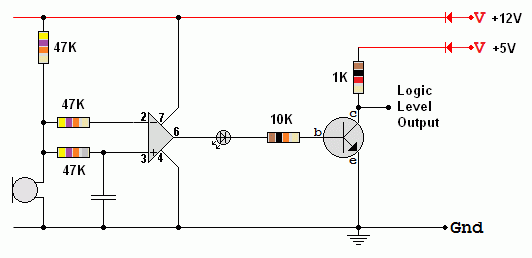

Audio to TTL |
|
To gain access to revision questions, please sign up and log in.
This is a nice way to use a comparator.
The audio signal from a microphone (or other source) is converted to pulses which can be used to clock 5 Volt TTL (transistor-transistor-logic) or CMOS logic gates. This could be used in ...
The microphone output is connected to both of the Op Amp inputs.
The inverting input has a decoupling capacitor which removes the audio but the DC potential is not affected.
Audio from the microphone on the non inverting input is now amplified by over 100,000 times by the Op Amp (which has a very high open loop gain). This produces an output square wave, switching between about 2 and 10 Volts.
The LED drops the Op Amp output by about 2 Volts ensuring that the transistor can turn off. This signal is used to switch the transistor and 5 Volt logic pulses are produced at the output.

reviseOmatic V3 Contacts, ©, Cookies, Data Protection and Disclaimers Hosted at linode.com, London